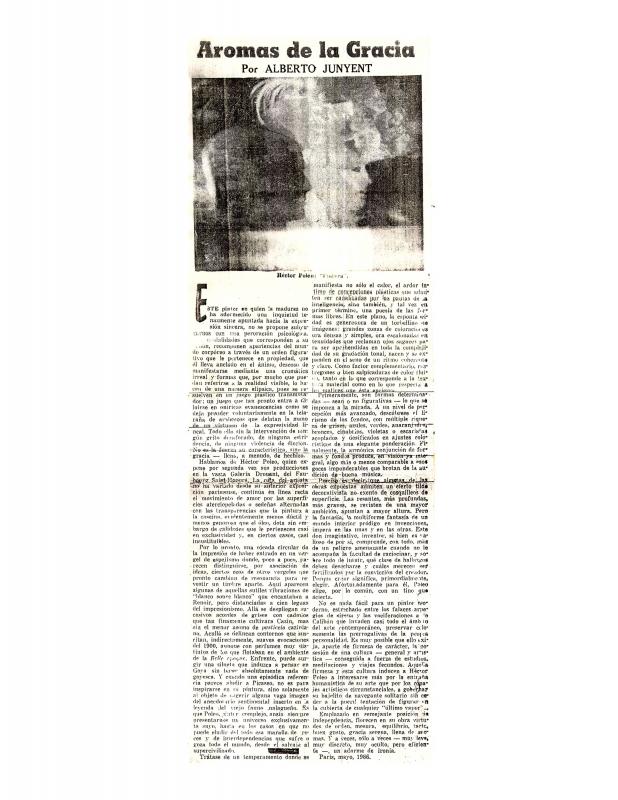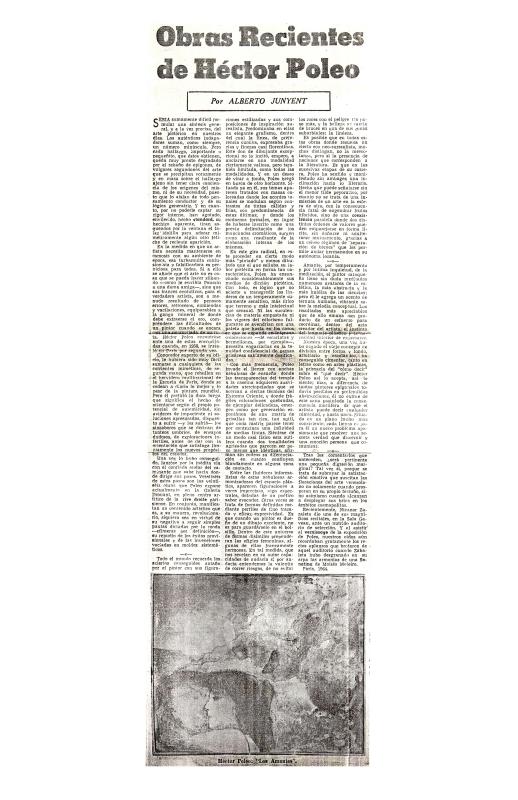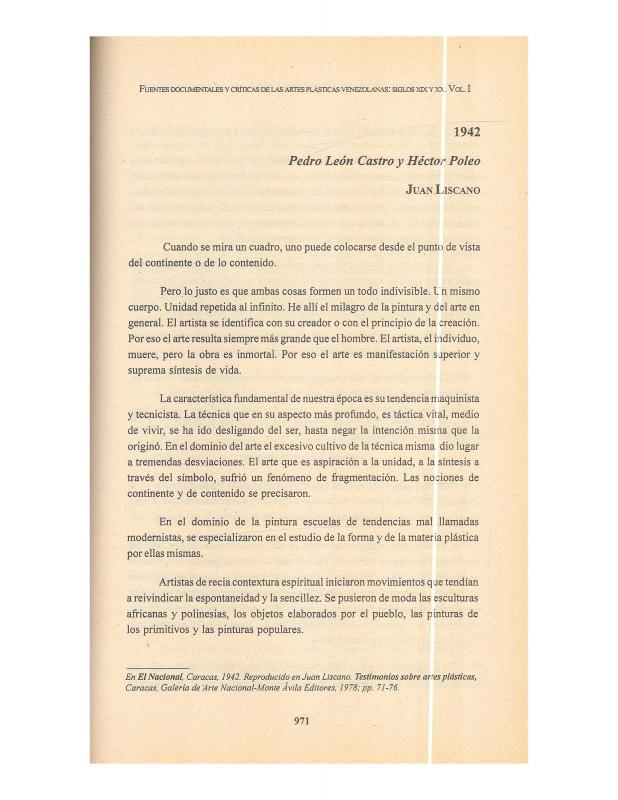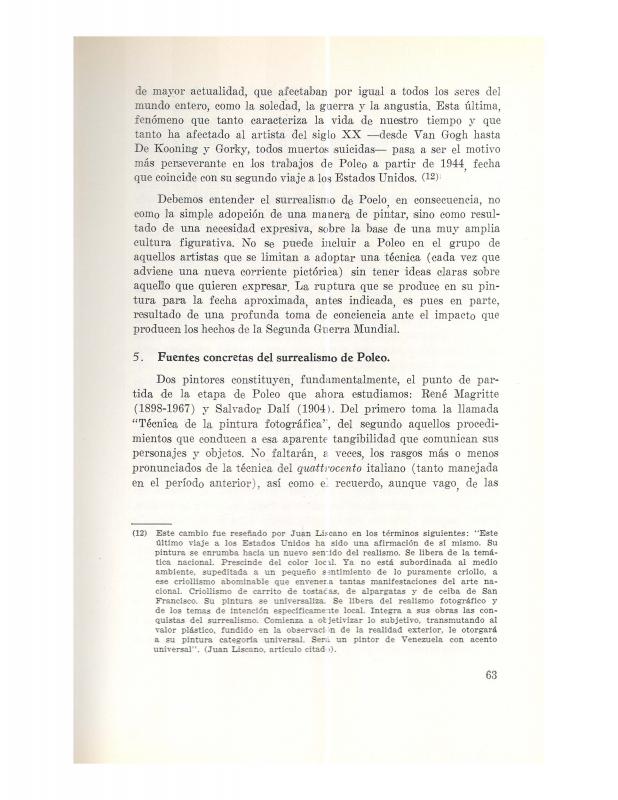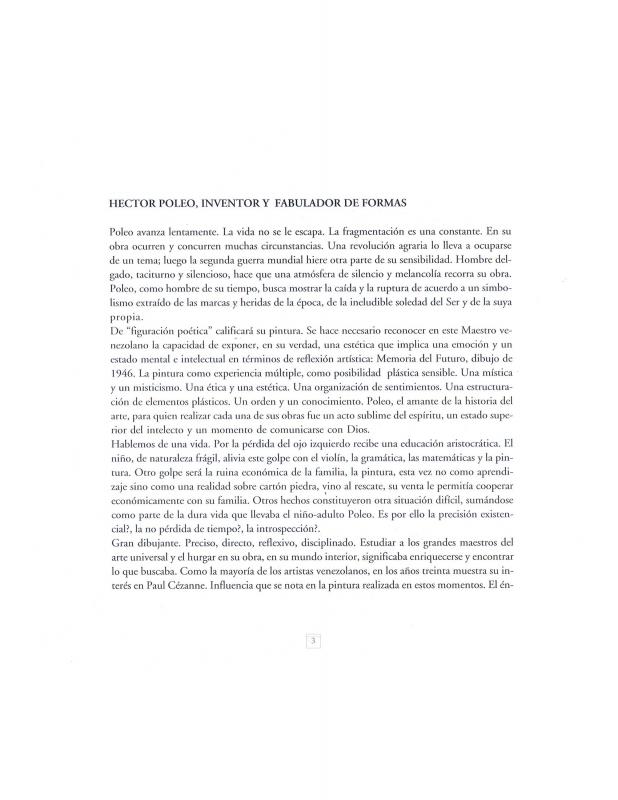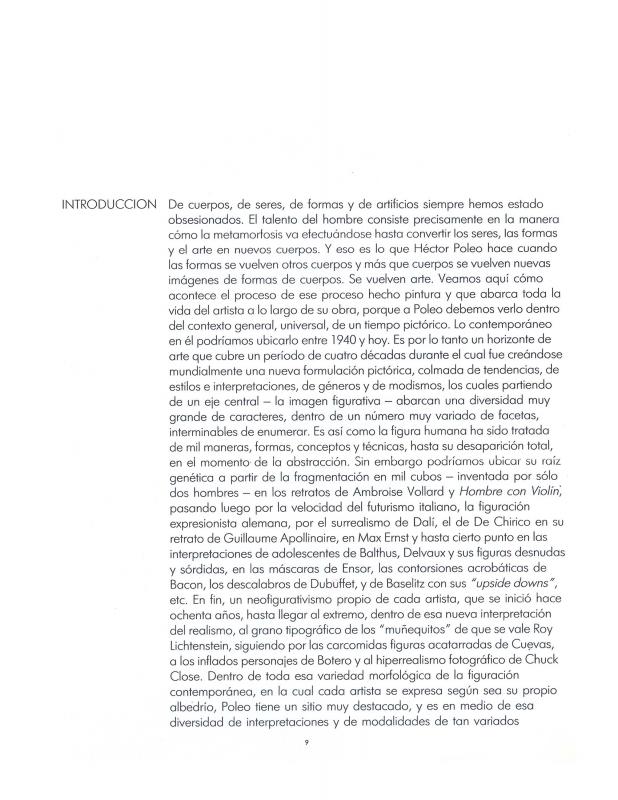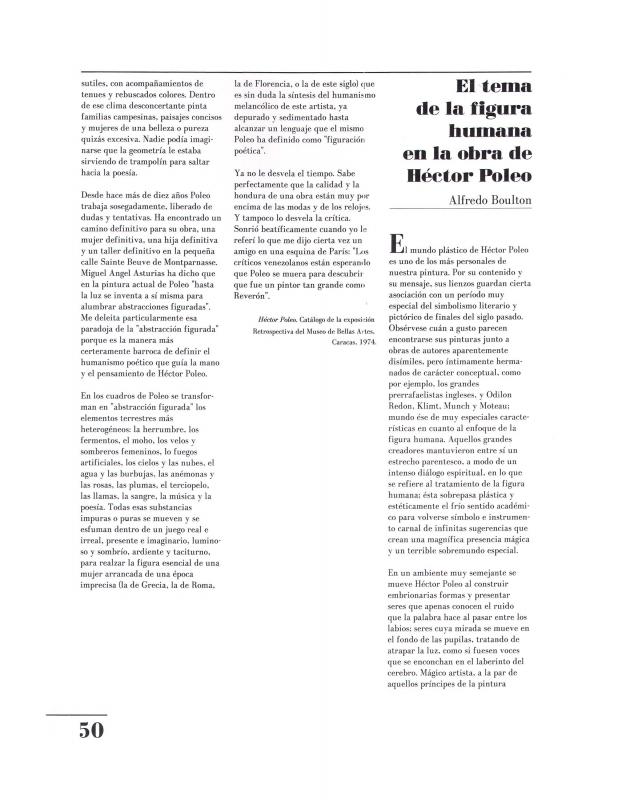In his 1968 essay on the work of the Venezuelan painter Héctor Poleo (1918–1989), the art critic Denys Chevalier analyzes what turned out to be the last period in the artist’s development (from the late 1950s to the mid-1960s). Chevalier followed the work of Poleo closely, with intensified interest after the artist decided to live in Paris. Regarding that period, the essayist emphasizes that it was both a time when his style was changing (like Poleo’s practice of Surrealism) and when the artist took greater interest in his painting materials. This was when the artist decided to change his technique from casein and oil to acrylic paints. To Chevalier, the aesthetic qualities that resulted from these decisions assumed a poetic tone comparable to the works of the Symbolist painters. In particular, the artist’s work was reminiscent of the work of the French printmaker Odilon Redon, an artist cited by the essayist as a reference for his comments about Poleo’s work. The arguments presented in the text focus on a formal art analysis of several significant works created by Poleo by that time (1968); these works are central to an understanding of Chevalier’s interpretation. The French critic was one of the first to use the term “Symbolism” to refer to the work Poleo produced in that period.
[For other texts on Poleo’s work, see the ICAA digital archive: Alberto Junyent’s reviews, “Aromas de la gracia” (doc. no. 1153851) and “Obras recientes de Héctor Poleo” (doc. no. 1153835); Juan Liscano’s article, “Pedro León Castro y Héctor Poleo” (doc. no. 850175); Simón Noriega’s text, “Fuentes concretas del surrealismo de Poleo” (doc. No. 1153819); Bélgica Rodríguez’s article in “Hector Poleo, inventor y fabulador de formas” (doc. no. 1153899); and finally, two texts by Alfredo Boulton, “Introducción” (doc. no. 1153883) and “El tema de la figura humana en la obra de Héctor Poleo” (doc. no. 1153964)].

